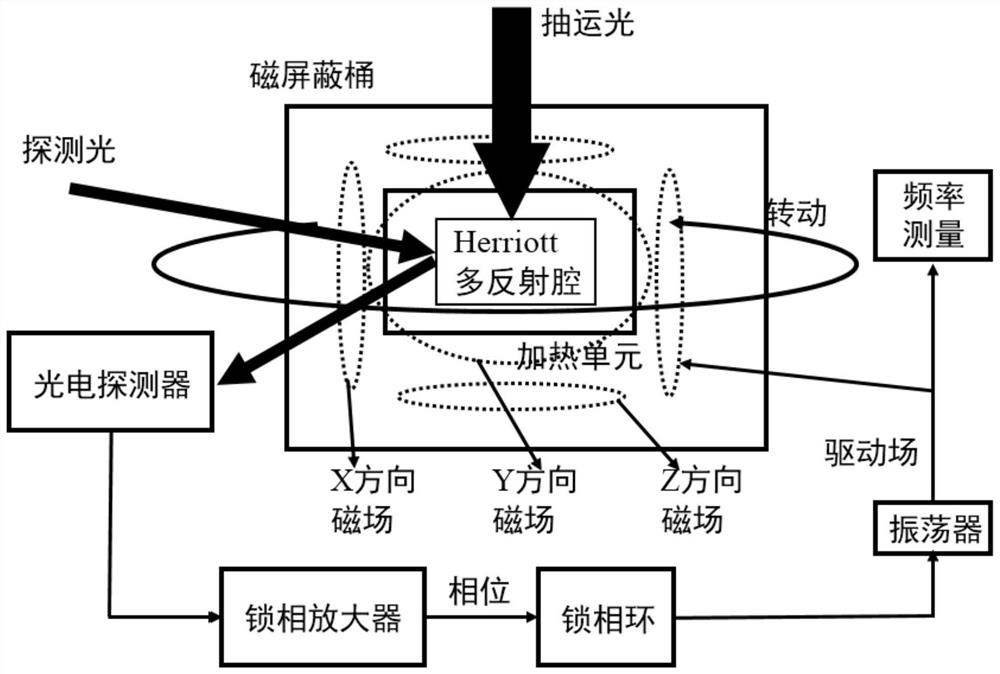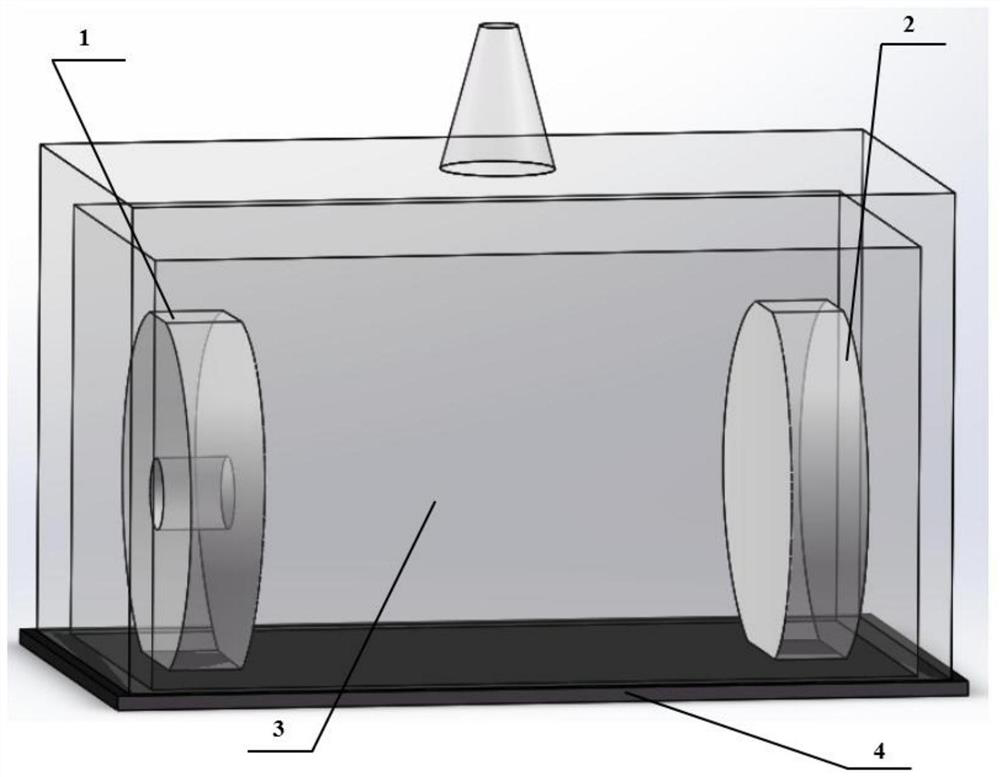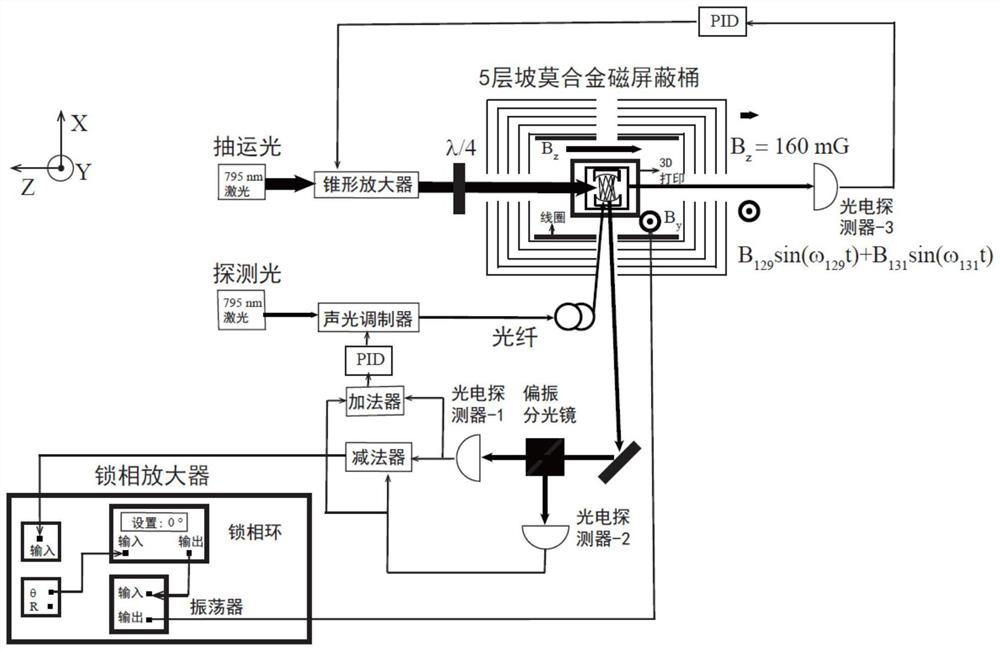Nuclear magnetic resonance atomic gyroscope based on multiple reflection cavities and implementation method
A technology of atomic gyroscope and nuclear magnetic resonance, applied in the direction of steering induction equipment, etc., can solve the problem of not seeing more reports on the test results of the whole machine, and achieve the effect of eliminating the need for optical path adjustment, simplifying the system, and realizing closed-loop continuous work
- Summary
- Abstract
- Description
- Claims
- Application Information
AI Technical Summary
Problems solved by technology
Method used
Image
Examples
Embodiment Construction
[0029] The present invention will be described in further detail below in conjunction with the accompanying drawings.
[0030] like figure 1 As shown, the test of the present invention is carried out in a 5-layer magnetic shielding barrel made of permalloy, and the magnetic shielding barrel can shield the interference of the earth's magnetic field and the external stray magnetic field. The atomic pool containing the Herriott multi-reflection cavity is the core part of the atomic gyroscope. When the atomic gyroscope is working, it uses the atoms inside the atomic pool to measure the rotation information. The atomic gas chamber is used with a 3D printing platform, which saves the step of adjusting the optical path. In actual work, the atoms need to be at about 110°C, because high temperature can get a larger signal, thereby improving the signal-to-noise ratio. In order to achieve this working temperature, two self-designed non-magnetic heating plates are used to heat the atomi...
PUM
 Login to View More
Login to View More Abstract
Description
Claims
Application Information
 Login to View More
Login to View More - R&D
- Intellectual Property
- Life Sciences
- Materials
- Tech Scout
- Unparalleled Data Quality
- Higher Quality Content
- 60% Fewer Hallucinations
Browse by: Latest US Patents, China's latest patents, Technical Efficacy Thesaurus, Application Domain, Technology Topic, Popular Technical Reports.
© 2025 PatSnap. All rights reserved.Legal|Privacy policy|Modern Slavery Act Transparency Statement|Sitemap|About US| Contact US: help@patsnap.com



